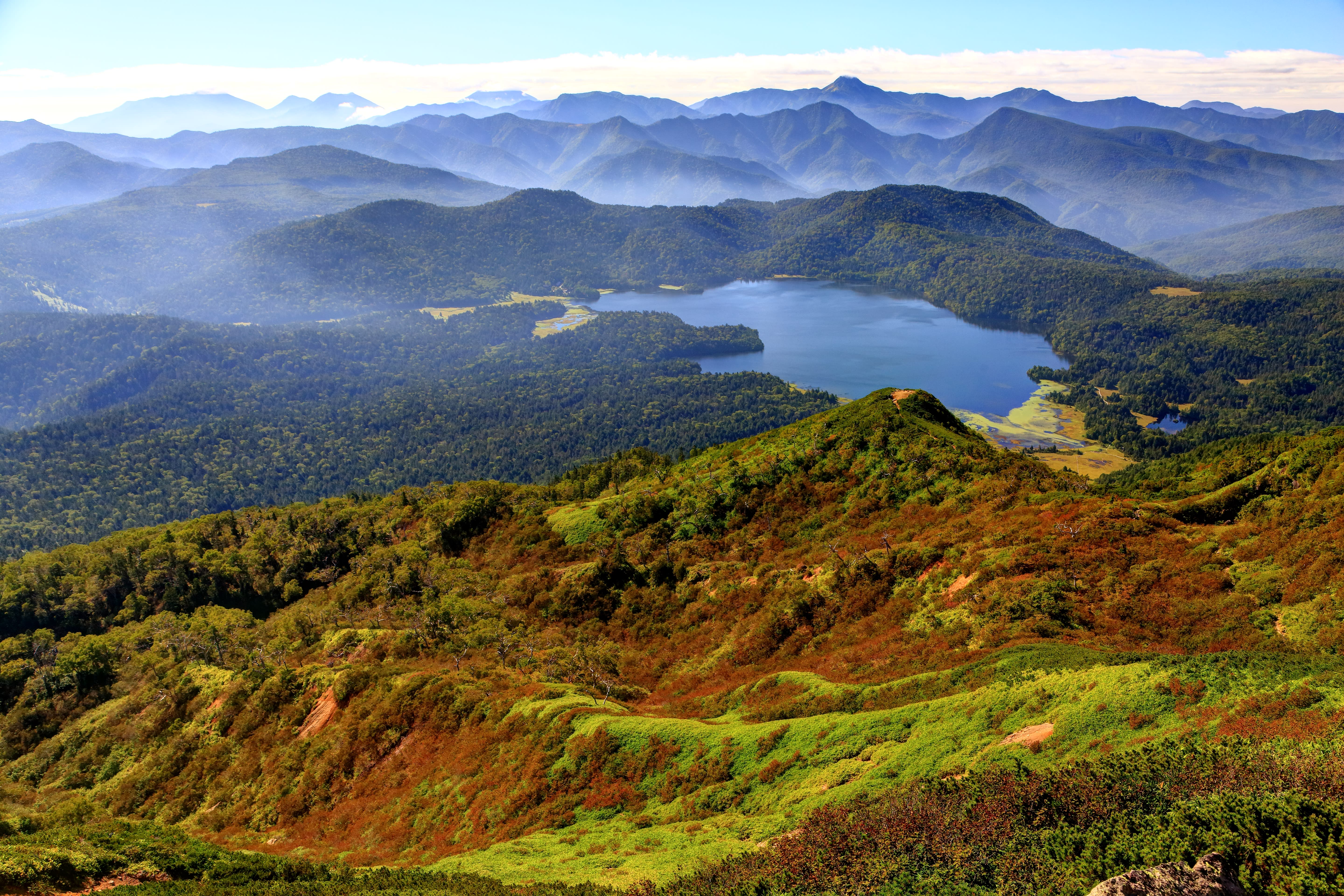Don't Miss
- Sanjo Falls, a cascade that rushes down 100 meters
- Walking through Ozegahara Marsh, Japan's highest marshland
- The panoramic views from the top of Mount Kasagatake
Oze National Park is a mountainous region encompassing natural wonders that include one of Japan’s largest highland marshes. It is home to diverse flora and rare wildlife such as the Japanese stoat and the country’s smallest dragonfly. You can trek some of the region’s tallest peaks here, stroll on wooden boardwalks through flowering meadows and see a towering waterfall. The park draws legions of hikers during the summer and fall (from June to October), but is covered in deep snow from winter to spring (from November to April). The snow only begins to thaw around May, and the area feels distinctly wintery.
Oze National Park is situated in the central area of Japan’s main island of Honshu, around 150 kilometers north of Tokyo. Eruptions of the Oze volcanoes shaped this region’s terrain over thousands of years. Along the way, they created a string of peaks from Mount Aizu-Komagatake in the north to Mount Shibutsu and Mount Kasagatake in the south. Mount Tashiro, Mount Taishaku and Mount Daikuratakayama are to the west. An extinct volcano, Mount Hiuchigatake, is at the park’s center, and is also the region's tallest peak. It overlooks Lake Ozenuma and Ozegahara Marsh.
Lake Ozenuma is in the east of this park, and offers stunning views of Mount Hiuchigatake. The lake and nearby marshland appeared after lava flows blocked the area’s rivers. Stop in at the Ozenuma Visitor Center to hear more about the local environs and hiking trails.
The lake is a good place to start your ascent of Mount Hiuchigatake (2,356 m)–the highest peak in northern Japan. The mountain towers over the neighboring marshland. The Ozenuma area has mountain huts where you can take a break or stay overnight during the climbing season, which runs from late April to mid-October. The huts require a reservation.
Walk the trail from Hatomachi Pass bus stop to reach the Oze Yamanohana Visitor Center–a perfect jump-off point for exploring Ozegahara Marsh. Wooden boardwalks stretch across the plateau’s marshes, getting you up close to the area's unspoiled natural scenery. Broad dwarf day lily (Hemerocallis esculenta), tussock cottongrass (Eriophorum vaginatum) and purple iris (Iris versicolor) grow in abundance during spring and summer. This area is also famous for the blooms of white skunk cabbage—known as mizubasho in Japanese—that transform the marshland from May to June. The marsh grasses turns bright red and yellow in fall.
More than 30 species of dragonfly inhabit the plateau, including the scarlet dwarf dragonfly (Nannophya pygmaea). At just two centimeters in length, the scarlet dwarf is Japan’s smallest dragonfly. You may also spot a Japanese stoat darting through the undergrowth.
Just south of the plateau is Ayamedaira Marsh. It is famous for its blooms of endemic bog asphodel (Narthecium asiaticum),which give the marshlands a buttery yellow accent in July and August.

The water that drains from Ozegahara Marsh flows into the Tadami River and over Sanjo Falls. At around 100 meters high, this is one of the tallest cascades in Japan. You can hike to the falls from the northern edge of Ozegahara Plateau. Take the wooden stairs to the observation platform to see the waterfall in its full glory.
Another waterfall, called Hiraname-no-Taki, is downriver. Follow the forest trail across the river to see dwarf rhododendrons in the late spring or early summer. The foliage along the riverbank is full of warming fall color in autumn. You may see Asiatic black bears and Japanese serows among the trees.

Mount Shibutsu is famous for rare plant species such as the endemic katouhakobe (Arenaria katoan) and ozeso (Japonolirion osense). The latter gets its name from the area. These tough alpine plants flourish on a type of hard rock called serpentinite, which forms Mount Shibutsu.
Neighbouring Mount Kasagatake is in the southwestern corner of the park, and is popular with hikers because of its panoramic views. Trek to the summit on the hiking trail from Hatomachi Pass.
Mountaineer and author Kyuya Fukada wrote about climbing these peaks in his book 100 Famous Japanese Mountains, first published in 1964.
Fukada also mentioned Mount Aizu-Komagatake at the park’s northernmost tip. To reach its summit, take the Komagatake Trail on the eastern side of the mountain. As you walk the mountain ridge, you’ll see numerous meltwater ponds and swamps. The route to the summit and back is around 10 kilometers. Figure on roughly seven hours round-trip.

Mount Tashiro, Mount Daikuratakayama and Mount Taishaku are at the park’s eastern periphery. You can trek these peaks starting from the small town of Sarukura or from Umasaka Pass.
The area has a wide variety of plant life, and you can see swathes of the delicate white blooms of the perennial osabagusa (Pteridophyllum racemosum) in the spring and colorful foliage covering the forest slopes in fall. Mount Tashiro’s summit is a flat plateau offering vistas of the park and neighboring peaks.
Oze National Park is known as the birthplace of nature conservation in Japan. Since the end of World War II, energy companies and the government had sought to harness the area’s abundant water resources to generate hydroelectric power. A local group of conservationists and local businesspeople protested, however, and halted the plans.
The region has also nurtured its own artistic heritage. Hinoemata Kabuki–a variation of the traditional Japanese theater form–has been performed for over 270 years here. The performance styles and techniques have been passed down through generations in Hinoemata Village. If you’re here between May and September, you may see the village players perform—that happens three times during that period.